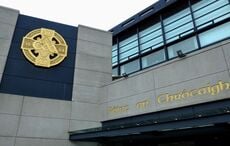New research conducted by an English historian has found why a yellow fever outbreak in the 19th century wiped out hundreds of Irish immigrants in the US.
A viral infection spread by mosquitoes, yellow fever is common in South America and in sub-Saharan Africa. Symptoms include fever, coma, seizures, vomiting, and organ failure.
ScienceBlog reports almost half of the 650 people killed by yellow fever in Savannah Georgia in 1854 were Irish immigrants. As new arrivals to the country, the Irish were more susceptible to mosquito bites.
After examining the burial, hospital, and news records of Savannah between August and November of 1854, University of Warwick historian Dr Tim Lockley found that out of the 650 victims of yellow fever, 293 were Irish immigrants
Savannah doctor Phineas Kollock said at the time: ‘..the extremely hot weather . . . has at length developed yellow fever among our Irish population. The disease is mostly confined to the Eastern part of the city. I do not feel apprehensive of its extending its ravages very much, although it is probable that we shall have cases occurring until frost.”
According to the records, 23-year-old Irishman Bartholomew Stephens had only been in Savannah for two weeks when he died of yellow fever on 17 October and 25-year-old Michael Bennet lasted just ten days before he died on 23 October.
The historian found another key factor was that the Aedes aegytpi mosquito that caused the disease was more active during the day. This particular breed of mosquito was also drawn to exposed perspiring flesh. Many Irish immigrants at that time worked as laborers and worked in the sun all day long.
Dr Lockley said: “Yellow fever certainly was a ‘strangers’ disease’ but not because strangers were not acclimatized to living in Savannah. Rather, it was a ‘strangers’ disease’ because strangers were also disproportionately male, in their twenties, working outside, and resided in neighbourhoods close to low swampy ground where mosquitoes thrived and in Savannah’s case a very large number of the ‘strangers’ in this position were newly arrived Irish.”




Comments